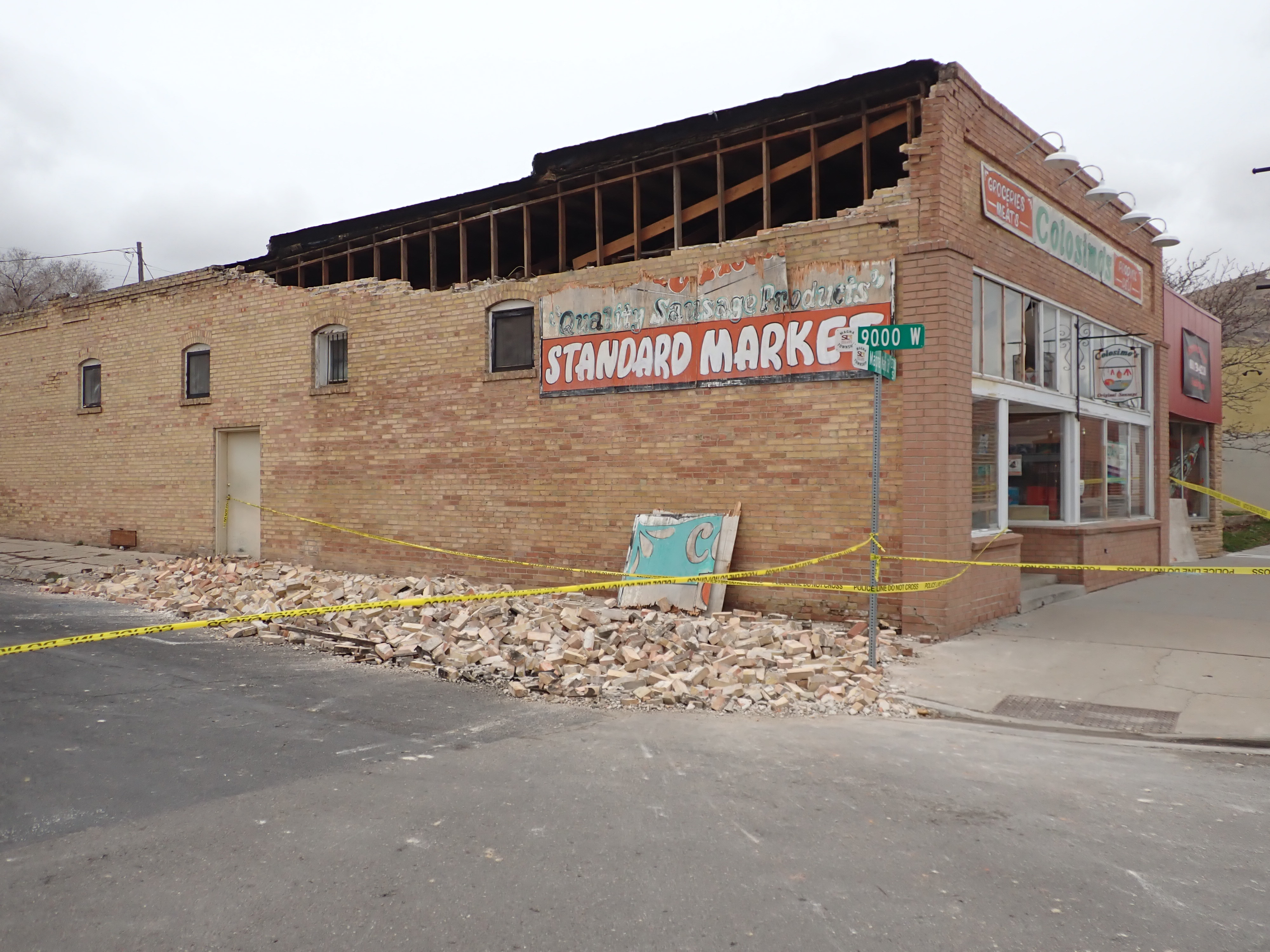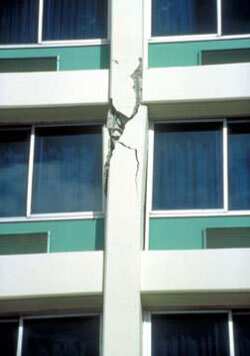There is an often-repeated saying, "earthquakes don't kill people, buildings do." Although you can’t control the seismic hazard in the community where you live or work, you can influence the most important factor in saving lives and reducing losses from an earthquake: the adoption and enforcement of up-to-date building codes.

Unreinforced Masonry Risk Reduction Report
Unreinforced masonry was a common building material throughout Utah until building codes began requiring reinforcing steel during masonry construction in Utah beginning in the 1970s. There are an estimated 140,000 unreinforced masonry structures throughout Utah including homes, businesses, schools and houses of worship. Published by FEMA and the state of Utah, this report provides local communities with a strategy to significantly reduce the earthquake risk posed by these buildings.
Download the Unreinforced Masonry Risk Reduction Report
What Are Building Codes?
Building codes are sets of regulations governing the design, construction, alteration and maintenance of structures. They specify the minimum requirements to adequately safeguard the health, safety and welfare of building occupants.
Rather than create and maintain their own codes, most states and local jurisdictions adopt the model building codes maintained by the International Code Council (ICC). The ICC’s family of International Codes includes:
- International Building Code (IBC): Applies to almost all types of new buildings
- International Residential Code (IRC): Applies to new one- and two-family dwellings and townhouses of not more than three stories in height
- International Existing Building Code (IEBC): Applies to the alteration, repair, addition or change in occupancy of existing structures. The ICC publishes new editions of the International Codes every three years and many states and localities have adopted them since the first editions were issued in 2000. In 2000, the three regionally-based model code organizations (BOCA National Code, SBCCI Standard Code and ICBO Uniform Code) combined together to form the ICC.

Learn more with the Building Codes Toolkit.
What Are Seismic Codes?
Some provisions within the IBC, IRC and IEBC are intended to ensure that structures can adequately resist seismic forces during earthquakes. These seismic provisions represent the best available guidance on how structures should be designed and constructed to limit seismic risk.
Changes or additions to the seismic provisions come from many different sources, including new research results and documentation of performance in past earthquakes. A primary resource is the 2020 NEHRP Provisions Edition Volume I and Volume II. FEMA’s companion document Earthquake Resistant Design Concepts (FEMA P-749) provides a nontechnical background explanation.
Adoption of the model codes is uneven across and within states, even in areas with high levels of seismic hazard. Some states and local jurisdictions have adopted the codes but have made amendments or exclusions relating to the seismic provisions.
Other jurisdictions have been slow to adopt the latest code editions. Unless your community has adopted the latest model building code, including its seismic provisions, new structures in your community will probably not provide the current minimum level of protection from earthquake hazards to you and others who use them.
How Are The Codes Enforced?
Adopting the latest building codes is only part of the solution. Codes must also be effectively enforced to ensure that buildings and their occupants benefit from advances in seismic provisions in the model codes. For the most part, code enforcement is the responsibility of local government building officials who review design plans, inspect construction work and issue building and occupancy permits.
What About Older Buildings?

Damage to older, reinforced concrete building in the 1994 Northridge Earthquake. © 1994 by Peter W. Clark and Regents of the University of California.
Except in certain circumstances, such as when a building is significantly renovated or altered or there is a change in its use that triggers the IBC or IEBC, the code requirements for existing buildings are those that were in effect when the structure was designed and constructed.
Your community probably has many older structures that are not protected against earthquakes. This is because buildings are often used for decades before being replaced or substantially altered.
These existing buildings are the single biggest contributor to seismic risk in the United States today.
Can We Make These Buildings Safe?
It’s possible to make these buildings more resistant to earthquakes through seismic retrofitting. When dealing with a population of buildings, the first step is to perform a quick survey using Rapid Visual Screening of Buildings for Potential Seismic Hazards (FEMA 154). The next step is to evaluate the building using Seismic Evaluation of Existing Buildings (ASCE/SEI 31-03). If the evaluation shows that retrofitting is needed, this should be done using Seismic Rehabilitation of Existing Buildings (ASCE/SEI 41-06). This standard, which is referenced in the IEBC, is based on Prestandard and Commentary for the Seismic Rehabilitation of Buildings (FEMA 356). The FEMA publication Techniques for the Seismic Rehabilitation of Existing Buildings (FEMA 547) provides an extensive description of retrofit techniques for strengthening the structural elements of buildings.
Seismic retrofitting of a building must also include steps to better protect non-structural components (suspended ceilings, non-load-bearing walls and utility systems) and building contents (furnishings, supplies, inventory and equipment). Reducing the Risks of Non-Structural Earthquake Damage (FEMA E-74) was recently updated and is an excellent resource for information on mitigating risk to non-structural components and contents.
Certain types of buildings, such as unreinforced masonry structures, have performed poorly in past earthquakes and are known to be particularly hazardous. Some local governments in high-hazard areas have enacted ordinances mandating that owners evaluate and retrofit these buildings. In most jurisdictions, however, seismic retrofitting remains voluntary.
How Important Is Seismic Retrofitting ?
Seismic retrofitting of vulnerable structures is critical to reducing risk. It is important for protecting the lives and assets of building occupants and the continuity of their work. On the whole, communities with more retrofitted structures can recover from earthquakes more rapidly.
If you live or work in retrofitted structures, you’re less likely to be injured during an earthquake. After the earthquake, you’re also more likely to have a home and a job to which you can quickly return.
Businesses that use retrofitted buildings are more likely to survive damaging earthquakes and to sustain shorter business interruptions and fewer inventory losses.
FEMA’s QuakeSmart program helps businesses identify and address their seismic risks through retrofitting and other earthquake mitigation activities.
Conclusions
There is no more important factor in reducing a community’s risk from an earthquake than the adoption and enforcement of up-to-date building codes. Evaluating older buildings and retrofitting structural and non-structural components also are critical steps. To survive and remain resilient, communities should also strengthen their core infrastructure and critical facilities so that these can withstand an earthquake or other disaster and continue to provide essential services.
For More Information
For many years, FEMA has supported seismic code development processes and promoted the adoption and enforcement of seismic codes through its participation in the National Earthquake Hazards Reduction Program (NEHRP).
FEMA has produced many publications for a variety of audiences to identify and correct building vulnerabilities through seismic rehabilitation. Visit Earthquake Publications—Building Codes and Seismic Rehabilitation to review these resources.
Visit Seismic Building Code Document Library

